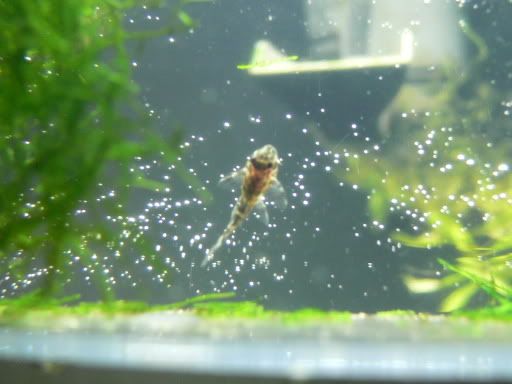Rantosa wrote:good stuff mate

how many males and females in the group? anything that you think that could have triggered them? we want the full story..okay fine, i want the whole story
Thanks everyone for the comments. There are three in the colony 2M:1F. The tank has one cave facing directly towards the front. One Maxi-jet (106gph) and the JBJ sump 208gph. They used to be in a community tank untill early April when I decided they needed their own space. I moved them and the tank is in an empty room where there isn't a lot of human activity. The lights are turned on manually, sometimes I skip a day or two. Feeding wise, I only feed them every two to three days - strictly Hikari Sinking pellets.
I'm really surprised they spawn as most Hyp. sp. need a lot of stimulation to get the first spawn. But I did nothing out of the usual, no WC's, no turning the heater off - nothing! I just left them alone - which is the key I believe.
Then one night I decided to check on the alpha male (I never see him come out at night), and low and behold I saw little wrigglers swarming around his head!

I checked two more times to make sure I wasn't just seeing something and then I saw the glare in their eyes - they look like tadpoles now, I guess they still have their yolk salks. I decided against kidnapping them as he is doing a great job at caring for them, I think I'll swipe them once they come out.
Does preforming a WC stress or kill the fry?







